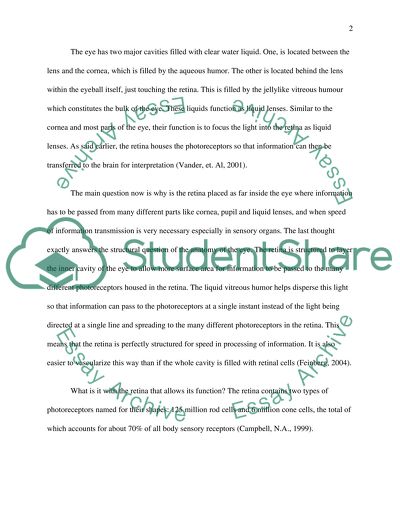Cite this document
(The Retina: Principles of Structure and Function Case Study, n.d.)
The Retina: Principles of Structure and Function Case Study. Retrieved from https://studentshare.org/biology/1538823-relate-the-structure-of-the-retina-to-its-function-explain-how-the-retina-changes-due-to-retinitis-pigmentosa
The Retina: Principles of Structure and Function Case Study. Retrieved from https://studentshare.org/biology/1538823-relate-the-structure-of-the-retina-to-its-function-explain-how-the-retina-changes-due-to-retinitis-pigmentosa
(The Retina: Principles of Structure and Function Case Study)
The Retina: Principles of Structure and Function Case Study. https://studentshare.org/biology/1538823-relate-the-structure-of-the-retina-to-its-function-explain-how-the-retina-changes-due-to-retinitis-pigmentosa.
The Retina: Principles of Structure and Function Case Study. https://studentshare.org/biology/1538823-relate-the-structure-of-the-retina-to-its-function-explain-how-the-retina-changes-due-to-retinitis-pigmentosa.
“The Retina: Principles of Structure and Function Case Study”. https://studentshare.org/biology/1538823-relate-the-structure-of-the-retina-to-its-function-explain-how-the-retina-changes-due-to-retinitis-pigmentosa.


